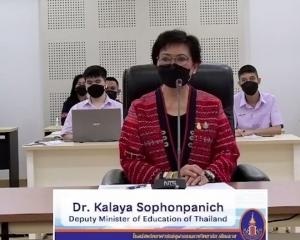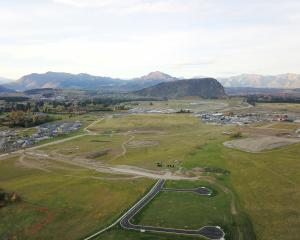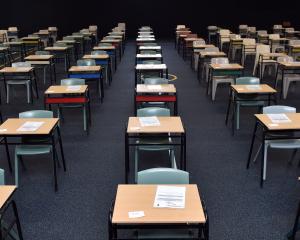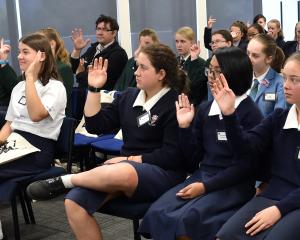The Government has agreed to set up a working party to look at the effect of new class ratio formulas on intermediate and middle schools - effectively an admission it blundered on that aspect of the policy.
About 215 schools providing technology subjects (cooking, sewing, art, ICT, woodwork and metalwork) for other schools could be affected more adversely than the Government expected.
The primary teachers' union, the NZEI, last week accused Education Minister Hekia Parata of being "deceitful" in not admitting to severe effects on schools with more Year 7 and 8 students.
Yesterday the union gave notice that it wants to put a reduction of class sizes on the table in its collective agreement negotiations in August after holding what it called an emergency summit at the weekend.
But senior government sources are pointing the finger at the Ministry of Education for advising Ms Parata wrongly on the effect on schools with a large number of Year 7 and 8 pupils (form one and two).
In a pre-Budget announcement Ms Parata changed class size ratios, including some increases to divert $60 million in funding for teacher recruitment and training over four years. "It is an explicit trade-off between quantity and quality," she said yesterday.
She expected 90 per cent of schools to lose or gain one full-time equivalent teacher and 10 per cent more than one. But some intermediate principals have calculated they could lose as many as five and that has come as a surprise to the Government.
"What has become really clear in that is that the Year 7 and 8 have had a 10-year provision for technology, the provision of which was not fully modelled," Ms Parata said.
Under the previous formula, there were eight ratios to fund 13 class sizes.
Now there will be three ratios for the same areas. Ratios for four of the 13 years went up; seven went down including at NCEA stages; and two remained about the same.
The ratios are a funding formula and the schools decide how to apply it in practice.
Those with a wider range of schooling years had more flexibility, Ms Parata told delegates to the National Party northern regional conference in Auckland yesterday.
It would be more difficult for some intermediates and middle schools (Years 7 and 10) to absorb the changes.
"It is exacerbated if the intermediate is a provider of technology because now they are not going to get the contributing students' money," she said later.
She said that an additional staffing formula of the provider schools (one to 120) had not been properly modelled under the new plans and the funding would attach to the child under the change, not the provider school to promote accountability.
Secretary for Education Lesley Longstone had met the president of the Association of Intermediate and Middle Schooling, Gary Sweeney, on Budget Day, to discuss concerns about the ratios.
A working group would be formed to look at the transition to the new ratios, which would take place over four years, Ms Parata said.
NZEI president Ian Leckie said yesterday the union would seek the support of principals and teachers for the additional claim on class sizes at meetings from June 5 on.
"No Government in living memory has made a deliberate decision to increase class sizes. The Budget cuts may help the Government's balance sheet but they come at the expense of our children's learning."











